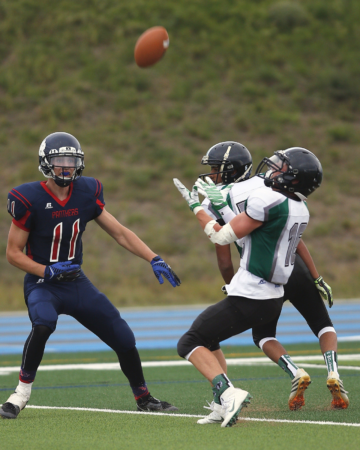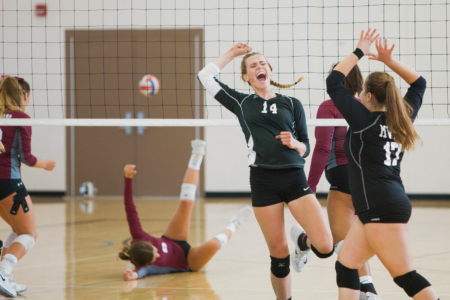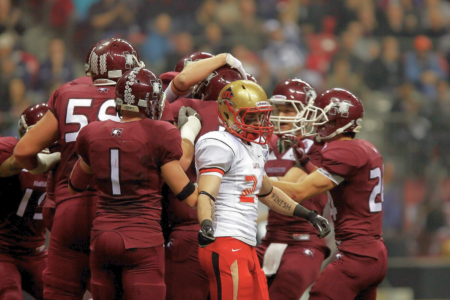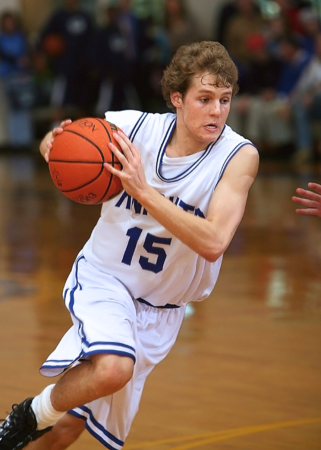A Page from the Sports Journalism Playbook
Did you know sports media and sports journalism consistently rank among the most popularly consumed news media? It’s not surprising; people love sports. In the last decade, sports journalism quickly made the leap from print to online to social media, where social pages devoted to sports have huge followings, report on games in real-time, and are widely seen as a timely source of truth. At the high school level, athletics departments, club sports, and teams provide huge opportunities to engage students, parents, and the community. From a school communications, marketing, and even curriculum standpoint, if you’re not thinking about your school’s athletics-related social media pages as a place for timely, engaging content about your school, you should be. Here’s what you need to know to evolve and advance your social media presence through athletics and knock it out of the park this season.
 Social Media Content Planning
Social Media Content Planning
Whether you have individual pages for specific sports teams or a centralized page for all athletics, you’ll need to make at least a loose plan for what you’ll be posting and when. Start with the season ahead. Look at the calendar and decide which sports and teams you’ll be covering. At the beginning of the season, you’ll likely be posting schedules with game times and locations. Look at key dates, including deadlines for ticket sales, fundraisers, merch orders, and other logistics and overlay them into your planning calendar. Be sure to slate in school happenings like spirit weeks and major events like homecoming, prom, and other formals. Check key dates for district and state games or tournaments and major competitions for sports like cheer, gymnastics, and others. Keep in mind, at this point, you don’t need to have content and imagery laid out for each post–just a rough outline of what you’ll be posting to the page and when according to the bigger picture.
Next, take a look at schedules and slate games into your content planning calendar. Highlight key rivalries and major events that students, parents, coaches, and the community will get excited about. Leave opportunities for on-the-ground content–highlights from a football game, a particularly spirited fan, or a memorable performance during a close game or rivalry. This is the type of content that people get fired up about.
You’ll need to resource educators, coaches, parents, volunteers, and students who are on the ground and can capture in-the-moment content. The reality? These people are already attending events and capturing interesting and timely content; they just need an easy and efficient way to share it. The trusted and accountable moderators running your school’s social media channels can then approve, schedule, and publish it. (This is where social media management technology built specifically for schools can help; more on that later.)

What to Post About
Whether sports content is posted through your school’s main pages (on channels like Facebook, Instagram,
Twitter, and even LinkedIn), or you have a page specifically for athletics and/or one for individual sports or teams, you’ll want to consider covering sports events and stories the way a journalist would. Consider what’s timely. Consider what people need to know and want to know about high school athletics in your area and beyond. Look for ways to capture unique and interesting stories about real people–players, coaches, alumni, and others–and do it in a way that shows how important student growth, community engagement, and student experience are to your school. Look for ways to make these pages the source of truth for all things athletics at your school; you’ll in turn foster a captive and growing audience.
Team Schedules & Ticket Sales
Post schedules at the beginning of the season. Stagger them a day or two apart to keep content rolling as seasons kick off. If your school does team photos, use them to capture the attention of players and parents. Streamline the creation of these posts by creating and/or using a template.
Score Updates
When it’s a big event–perhaps a long-standing rivalry or homecoming game–consider posting a halftime score and a final score. Use a simple scoring template tailored to each sport to save time and keep things consistent. Facebook and Instagram are great places to post visual updates. Twitter–where you only have 280 characters and content has an inherently shorter shelf life–is a great place to live-Tweet updates during the game (especially scores).
Game Day Footage & Video Highlights
When everyone’s talking about an unbelievable end-zone catch, a massive kill by a star volleyball player, or an incredible three-pointer at the buzzer, social media is the ideal place to put a moment back in front of players and spectators to comment on, share, and re-live. Whether sharing a single highlight or a series of moments strung into a reel, videos receive a high level of online engagement on platforms like Facebook, Instagram, and Twitter.

Highlights from Local Papers & Media Outlets
When a media outlet–including your school newspaper–does a piece on a player, team, or game, be sure it’s shared across your social channels. Post links to online pieces or share them directly from a media outlet’s page.
Interviews with Coaches, Athletes, & Alumni
Spruce up socials with a quick Q&A from a person of interest. Interviews are a great way to humanize sports and teams–whether it’s a recently named All-American athlete, a player with a unique background or story, an alumni returning for a visit or clinic, or a well-regarded coach. Identify and highlight mic-drop moments by using them in social media posts that draw your audience into a longer interview or story.
Rivalries
A long-standing rivalry can have a ton of interesting history and nuance. These stories bring people together through a sort of communal, remember-when undertone. Send students into the community to interview folks about rivalries and the memories surrounding them. Use social media to post photos from over the years that show how these stories and experiences have evolved.
Throwbacks & Where-Are-They-Nows
Speaking of remember-when, throwbacks are wildly relatable and super-shareable content for social channels. Dig up some old archived team photos, school newspaper clippings, or yearbook features from your school’s vault. Post them on Thursday under the “throwback Thursday” theme, or choose an anniversary date using an “on this day” theme.
Merch & Gear
Remember to post updates about where and how spectators can purchase merch and gear and a reminder of how proceeds support the team. Visuals that show off new designs can get a surprising amount of engagement.
 Fundraisers & Community Service Work
Fundraisers & Community Service Work
Fundraisers and service work are a great way to build goodwill throughout the community while garnering support for specific efforts. Be sure to include an easy way for folks to take the next step. Where possible, link directly to team purchase pages and online checkouts, or provide contact information. Ask your audience to like and share posts about fundraising efforts. Lastly, take a page from the nonprofit playbook and look for ways to translate dollars raised into impact. For example, if you’re raising dollars for a specific effort (new facilities, new uniforms, or travel costs for a high-performance camp), explain your goal and include a note like: Every season ticket purchase funds a home and away jersey for a student athlete.
Scholarships, Awards, & Other Accolades
Look for opportunities to recognize players on your school social channels as they receive scholarships, awards, and other accolades. Letters of intent and the ceremonious signing of those letters are another great opportunity to put student athletes on display in front of their communities.
Get Students Involved
Right about now you’re probably thinking, These are great ideas, but how can I possibly be everywhere at once to capture all this content? Indeed, sports content can be especially challenging with so many games, matches, tournaments, and events to attend and support. The reality: You can’t be everywhere at once. To gather content effectively, leverage folks who are already at these events.
School social media management technology makes it easy for schools to capture content, then funnel it to a moderator or multiple moderators to review, approve, schedule, and publish. The right school social media management tool will also include features that make it easy for teachers and administrators to provide feedback to student content creators and collaborate in real-time so the experience coincides with learning opportunities and curriculum.
When you’re considering where to look to get students involved, start in places with curricular crossover. Consider engaging students in classes and activities like journalism, creative writing, multimedia and media arts, graphic design, photography, yearbook, student government, or student council. Also consider calling on volunteers who work closely with teams, including student equipment managers or team managers. Parents can even be great for sourcing content–even if they only submit photos and notes for captions from games and events. The right social media management technology makes it easy for content creators and moderators to turn those drafts into meaningful content for school social media channels.
Moderation is Crucial
However you go about planning and sourcing sports content for social media, moderation is an absolutely crucial piece of the puzzle. Without proper checkpoints, access permissions, and processes in place, school social media channels can quickly become a liability with inherent opportunities for issues and scandals. What’s more, school socials are subject to FOIA (Freedom of Information Act) regulations, which means social media communications must be properly archived in the event of a communication audit or request. The right school social media platform will include both moderation and archival tools that make start-to-finish management across channels and users absolutely seamless.
Get Started
Interested in learning more about how technology can bring content creators–including students, parents, and educators–together in a central platform designed specifically for schools?
Schedule a demo with us to learn more about Class Intercom. Not ready for a demo? Reach us directly at info@classintercom.com.